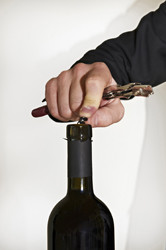Rescuing wine from cork taint
Cork can be negatively affected by airborne contamination, which does not pose health concerns but changes wine flavour and taste. New corking techniques will support the sustained quality of European wines by allowing winemakers to continue using the natural cork that contributes to flavour. At the same time, it will help maintain the competitiveness of small and medium-sized wineries. Against this background, the project 'Novel method to remove chloroanisoles present in cork stoppers' (NEATCORK) was established. Research focused on the development of a plasma decontamination process at laboratory-scale, and other objectives were dedicated to industrial implementation. This included the design and construction of a prototype suitable for industrial level operation. After the successful design and construction of all components and their respective adjustments, putting all components together and then setting up, the prototype was finalised. To meet industrial requirements, parameters like supplied power and distance and angle between the cork stopper and the plasma source and gas flow had to be varied until perfected. Final validation of NEATCORK's prototype included tests on bottled wine. Analysis was conducted after several months, which included measurement of the TCA content in the wine, the content of antioxidants like sulphur dioxide or ascorbic acid, colouration of the wine and volatile aldehydes. The overall business opportunity is based on a thorough analysis revealing economic losses related to contamination valued at between EUR 43 000 and 87 000 per year for small and medium wineries. Larger companies could also take advantage of this new technology. The new system will have a huge impact on the sustainability of small and medium wineries in the cork industry by making them more competitive among the large companies that have their own decontaminating methods. The economic impact of the NEATCORK technology will benefit not only these businesses, but the European economy as a whole.



